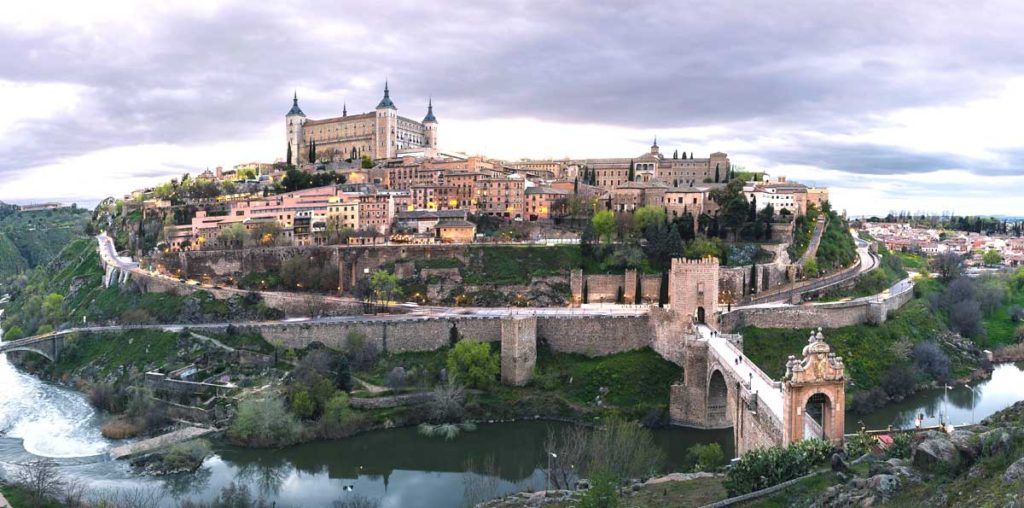Islamic history began with the emergence of the Prophet Muhammad, who established a strong state in all aspects of life. The Islamic state succeeded in establishing organizational and scientific foundations that made it one of the strongest states for 1000 years.
I do not personally deny that the Islamic State has gone through many setbacks and wrong political decisions made by its rulers, but in general, it cannot be denied its importance in science, art, and engineering, and even in the constitution and laws from which all countries of the world have benefited in this era and which I will mention in my next articles. of this series.
Islamic architecture from its beginnings
Architecture began after the Prophet Muhammad moved from Mecca to Yathrib (currently Medina). The Prophet was interested in architecture. The first thing he did during his migration was to build a mosque, which is the “Quba” mosque. Upon arriving in Medina, he built a mosque and the design was very perfect serving worshipers in the mosque and make them closer to God.
I will show you the initial plan of the mosque:
The mosque was initially designed in the form of a square and was divided into several sections. One section is called the Haram. It is for worshipers, and its direction is towards the Kaaba in Mecca. There are also some rooms for the Prophet Muhammad, which are present for this day, and one of them was buried when he died.
It has been developed in all mosques, and it is the simplified model of mosques. Therefore, mosques are built using the characteristics of the Prophet Muhammad Mosque.
The mosques were the starting point of the Islamic urban renaissance, then the architectural elements of the ancient Greek, Roman, and Persian civilizations were used and developed and used in Islamic buildings and palaces.
Umayyad Islamic architecture
In the formation of any Islamic city, the nucleus of the city is established, which is the mosque, so the Islamic mosque was not only for worship, it was a school, educational institutes, a social center, and a place for Muslims to gather
The Great Mosque of Damascus, which is considered the first Islamic architectural success in the Umayyad era, was established. It was part of this mosque for Christians. They had prayed with each other in the same place for more than 100 years. Sunday bells were ringing in conjunction with the Islamic call to prayer. This mosque was an example of religious tolerance.
After many years, it was agreed to make the place a mosque for Muslims and today it is called the "Umayyad Mosque".
Umayyad architecture in Andalusia
It may be one of the most prosperous and rich Islamic urban phases. Andalusia has presented many architectural masterpieces that we see as amazing and distinctive.
- The Arabs in Andalusia had their way of living that they took from their previous way of life and worked on adapting it according to the new conditions of life in Andalusia. They developed the traditional design of housing into a more modern style, so new architectural elements were used, such as the inner courtyard decorated with trees and green elements, streets and neighborhoods were designed according to the design It was also developed on narrow streets with broken axes.
- After increasing the extraction of gold, silver and other minerals, they were used in the interior and exterior decoration of the building, so mosques and palaces were decorated with gold, silver and furniture.

- The Arabs did not forget the importance of the Arabic language and its sanctity. The arts of Arabic writing were used to decorate the facades of mosques and palaces, as it is the language of their holy book “the Qur’an” and the language of their ancestors and fathers.

- The scientific and engineering aspect dominated the work of the Arabs in Andalusia, as they developed the technique of raising water and controlling it to reach the important vital sites.
The most famous Islamic architectural wonders in Andalusia:
- Al-Zahra City
A city established by the Caliph (the ruler) Abd al-Rahman al-Nasir, who is the eighth ruler of the Umayyad state in Andalusia. He built the city to be the seat of government. This city was built within 15 years, but its importance did not last long, so it was not used as a seat of government for only 40 years.
The city was subjected to a lot of destruction and turned into rubble until it was recently discovered.
The city’s building materials were brought from all over Andalusia, Europe and Africa. The city was built from the most precious stones such as green and pink marble. It was built by many builders, architects and engineers. The city was one of the most beautiful cities in Europe at that time.
Al-Zahra Palace was one of the greatest architectural palaces in Europe. New architectural elements were added that did not exist before. It was a miracle of Islamic architectural beauty. Marble decorated with gold was used and the palace was decorated with statues, antiques and pictures.
"In the center of this palace was a cistern filled with mercury. If the sun shines on it, it is reflected on its sides with charming lights, and around the palace are lush gardens filled with statues made of amber and pearls".
Continue to the next part of the series>>
Thanks for reading!


